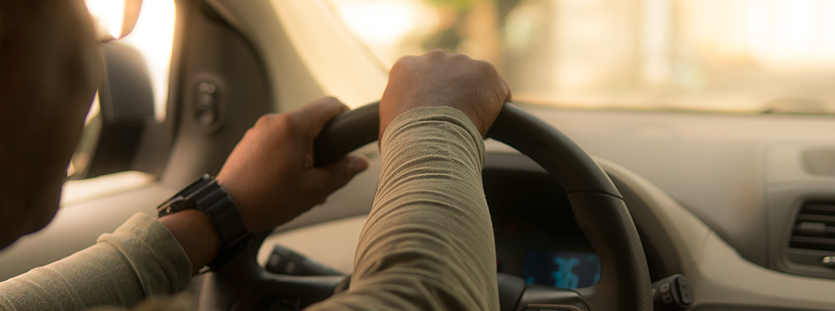Brexit has impacted our lives in a big way, whether we have realised it or not. Travelling in Europe is now a different experience and, while by no means impossible, travel has developed more barriers than before the process began. Though minimal impacts are noted when on holiday, those hoping to move are faced with an entirely different playing field.
People moving or travelling on the continent often want to take their own vehicle or drive a rental car. Driving in Europe can be confusing, whether you’re new to driving on the opposite side of the road or unsure about what documents are required. To help you navigate the world of driving in Europe, we’re here to explain how Brexit has impacted the process.
Driving in Europe left, or right?
An easy way to know if you need to be on the left or right side of the road is that there are only four countries that drive on the left:
The rest drive on the right. You’ll also be able to tell as the car will be set up on the opposite side to normal if you are in the UK with the steering wheel on the left-hand side rather than the right.
What Do I Need to Drive in Europe After Brexit?
In a post-Brexit Europe, it’s sensible to expect there to be more hoops for Brits to jump through. We are no longer a member of the EU, which means some of our documents are no longer valid when we leave the UK. We will take you through any special documents needed to drive in the EU, including your UK driving licence, proof of insurance, any registration documents, and the possibility of requiring a local licence or IDP.
Driving Licence
Thankfully, UK residents with a UK photocard driving licence won’t need to be concerned about swapping their licence or procuring an International Driving Permit (IDP). If your licence was issued in Gibraltar, Guernsey, Jersey, or the Isle of Man, or if your licence is in paper form, you may need to apply for an IDP.
If you’re planning to drive through the EU and to another country, you may well need an International Driving Permit, so remember this should your plans change. An International Driving Permit costs £5.50 to apply for but is fairly simple to procure. Ensure you do your research if you need one, as there are a few different specific types.
If you are moving to an EU country, the process is slightly different. A UK licence is usually valid for a short period, which can differ depending on your destination. Find country-specific licence swapping information on the Government website. However, if your stay abroad should extend past this limit, we recommend that you exchange your licence for a local licence.
Certificate of Motor Insurance
When driving your own vehicle in an EU member state, you’ll need to be able to produce a certificate proving you have motor insurance for your vehicle. Most hire car companies suggest you take out insurance too or else pay for any unexpected damage when driving around the country.
You are not required to carry a Green Card when driving in the EU.
Registration Documents
If driving within the EU for a period of fewer than 12 months, you must ensure you have your vehicle registration documents with you at all times. This includes:
- A VE103 to display permission to use a hired or leased vehicle abroad
- Logbook (V5C) registered in your name
Additional Driving Requirements Post-Brexit
GB Stickers After Brexit
After the 28th of September 2021, vehicles registered in the UK will display a different national identifier – instead of GB, vehicles will have “UK” on their number plates. From this date, cars still displaying GB must have a UK sticker attached when driving in the EU. If your vehicle does not have the new UK identifier included on your number plate, you will need to acquire a UK sticker and attach it to your car.
Motoring Accidents
If disaster strikes and you are involved in a road accident in an EU country, there’s no need to panic. First of all, contact your insurance provider. You might need to be prepared to make an insurance claim in the local language, as legal proceedings must take place in the same country as the accident took place. If the driver at fault is uninsured or cannot be traced, you may not receive any compensation.
Breakdown Cover
With Brexit changes, it’s more important than ever to check if your UK breakdown cover will still provide assistance when driving in the EU. There may be a reciprocal agreement with European breakdown services, but it’s better to know what circumstances there are before the worst should happen.
Headlight Converters
You may need headlight converters if you are taking your own car with you as, if you’re from the UK your headlights are set for driving on the left instead of the right, and if not converted they can blind other drivers.
It is a requirement in the EU to not dazzle other drivers. If not converted, you can receive a fine or even invalidate your insurance. Usually, they cost under £10 and are easy to fit.
Safety Equipment
In some EU countries, it is compulsory to have certain pieces of equipment in your vehicle at certain times of the year i.e., snow chains, warning triangles, reflective jackets, and winter tires. By not carrying the equipment you are effectively breaking the law, in Belgium, you can face up to a £500 fine for having incorrect or no equipment.
Each country has its own specific list of what you will need to check the country you are travelling to for specifics. If you hire or lease a car, check the boot as most hire companies will provide the equipment for you. Check if you need an emissions sticker to avoid a fine of over £70, this can vary from country to country and city to city.
Tips for driving in Europe
- If you’re hiring a car, request a personal code from the DVLA, this helps hire companies to check how many points you have on your licence.
- Not always checked but good to have just in case.
- Make sure you take the correct documents with you; passport, driving licence,
- When taking your own car take the above and the logbook, certificate of motor insurance and a copy of your travel insurance.
- Renting a child’s travel seat can become costly about £6-8 a day so taking your own is the best option.
- Check the country-specific rules and regulations before driving anywhere.
- Headlight converters are just stickers that adjust the dipped beam of your headlight and can be picked up in places such as Halfords.
- GB stickers have been replaced by UK stickers, if taking your own car to Spain, Cyprus, or Malta you will need a UK sticker regardless of whether you have the new UK identifier on your licence plate. They only cost approx. £3.99* a sticker, so make sure you get one before you travel!
- The UK’s Highway Code has recently been updated, so check that you know the up t0 date code in the country you are driving in.
- If taking your car to a non-EU or EEA country such as Turkey, you’ll need to ask your insurer for a ‘green card’ to ensure you can drive when you’re over there.
If you are hoping to acquire a new car when moving to an EU country, discover GMS Xtra. GMS Xtra offers a range of different partners and services, one of which can lease or finance a car abroad. Get a quote with GMS today and see how else we can help you move abroad.








